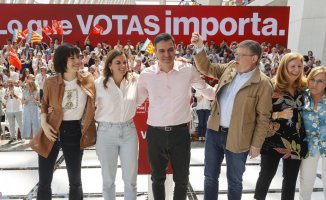On June 4, 1926, Espanyol undertook an unprecedented adventure, possibly the most daring in its history: a tour of Argentina, Uruguay, Chile, Peru and Cuba to face the great South American teams. A journey that ended four months later with suitcases full of unforgettable experiences. The Blue and Whites' American tour was such a success that it was soon emulated by Madrid and Barcelona.
Espanyol prepared their adventure in great detail, with commitments contracted in advance and the presence of the then-legendary Ricardo Zamora in goal as a claim. The president, Genaro de la Riva, led the group, with 12 club players and seven more, on loan from other entities. Also traveling were the coach, Paco Bru, a federal representative and the journalist José Luis Lasplazas.
The transatlantic Principessa Mafalda, baptized in honor of the second daughter of the Italian King Vittorio Emanuele III, then made the crossing from Genoa to Buenos Aires with stops in Barcelona, Rio and Montevideo. Seventeen days after leaving the port of Barcelona, on June 21, the blue and white expedition landed in Argentina, received by hundreds of fans, leaders and journalists.
Paco Bru left a good account of the adventures of the journey in his memoirs. He explained, for example, the difficulties experienced by many of the footballers, except for Zamora and a few others, to appear in tuxedos at gala dinners. Or the coincidence on the ship with characters of the fame of Vittorio de Sica, the baritone Arnold Gabor and the tenor Roberto d'Alessio, who enlivened the nightly festivities. Just one year later, the Mafalda sank off the Brazilian coast, killing nearly 400 people.
A detailed account and spectacular photographs, like the ones that accompany these lines, can be found in the book La Reconquista de América, by José Antonio Pastor and Jordi Puyaltó.
Espanyol faced the most famous rivals, in a structured calendar that included the days of rest and transfer that were necessary. The debut, on June 27, was against a selection of Argentine players, the Combinado Zona Norte, with the assistance of the President of the Republic, Marcelo Torcuato de Alvear. The Blue and Whites won with a goal from Mariano Yurrita. After a tie with the South Zone (where Guillermo Stábile played, four years later top scorer in the Uruguayan World Cup), the big match was organized on July 9, against a team from Buenos Aires that could almost be considered the Argentine team. With a full house at Sportivo Barracas, Bru fielded a 19-year-old winger who made a career at Espanyol and then at Barcelona: Martí Ventolrà. The Argentines dominated 2-0, but Espanyol started a hard-fought draw at two and the game could not be finished due to pitch invasion.
In Uruguay, Espanyol faced the two big local clubs. First the National, with up to six Olympic champions from Paris 1924. Espanyol won (0-1, Yurrita) and then Peñarol, where the already veteran José Piendibene stood out, considered by specialists such as Martí Perarnau the first false 9 in history, a true predecessor of Di Stéfano and Messi.
Then came the vicissitudes of crossing the Andes, to move from Mendoza (Argentina) to Valparaíso (Chile). On August 8, the expedition took the Trans-Andean railway, an engineering work inaugurated in 1910 that traveled 248km and exceeded 3,000 meters through gorges and precipices.
In Puente del Inca the trip was paralyzed by the snow: the train could not continue. De la Riva's efforts made it possible to hire a hundred mules and cross the most complicated area, connect with another train and continue the journey. It was about 20 km of intense cold and sun rays that blinded the eyes. “We had a strict order: no one was to get off the mule no matter what happened,” Bru explained. “But I was the first: mine threw me from the front and I ended up buried head first in the snow. What a pirouette!”
The tour continued in Chile, Peru and finally, through the Panama Canal, to Havana, from where the return ship departed. On October 6 the expedition arrived in Bilbao, later received with an indescribable popular procession at the Gràcia stop in Barcelona and taken in convertible cars to the City Hall, where Zamora addressed the crowd. Bru, with his peculiar irony, wrote: "The following Sunday we played in Sarrià and that crowd that had seen us off, that crowd that had received us... went to see Barcelona play".













